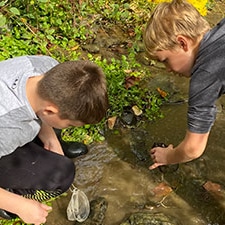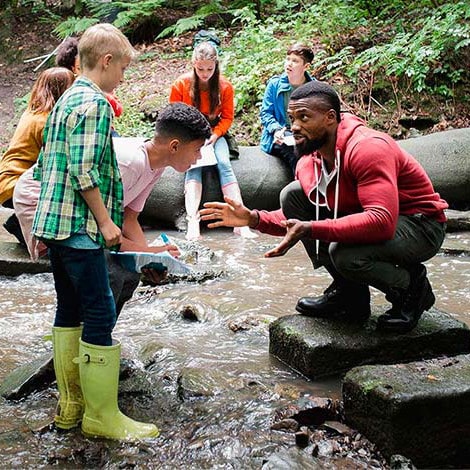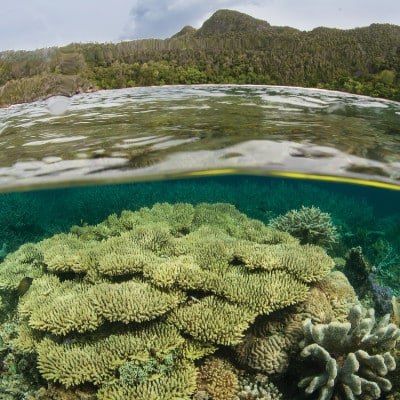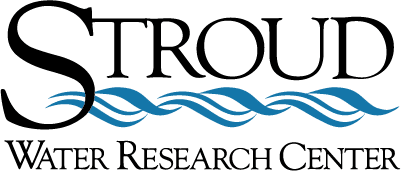Curricula and Lessons
Stroud Water Research Center and partners created the following curricula, lessons, and mini-units incorporating the Leaf Pack Network.

Shared Waters Curriculum
(Lesson 8; elementary level)

WATERS Curriculum
(Lesson 2; middle school level)

Biodiversity Unit by the Smithsonian Science Education Center (Part 6, pg. 22)
Goals for Involvement in the Leaf Pack Network
- To actively engage students in investigative and place-based watershed education in environmental science, technology, engineering, and math (E-STEM) content.
- To promote student inquiry by using scientific methods involving observational and explanatory activities.
- To raise awareness of the importance of streamside forests to the ecology of rivers and streams and to promote their stewardship.
- To develop a diverse and dynamic network of groups that digitally share information about their backyard streams.
- To use the Leaf Pack Stream Ecology Kit and other teaching resources to improve hands-on E-STEM education and teacher professional development.
Objectives for Involvement in the Leaf Pack Network
At the conclusion of the project, students will have:
- Used the Leaf Pack Network as a tool to apply and understand scientific principles in a real-world situation.
- Conducted a research-oriented investigation of their local stream(s).
- Engaged in inquiry-based, hands-on data gathering and monitoring.
- Observed and described aquatic food webs and resource availability among communities,
populations, and organisms in a freshwater ecosystem. - Identified local tree species and their function as food and habitat in freshwater ecosystems.
- Identified local macroinvertebrates.
- Explored macroinvertebrates’ roles as valuable indicators of stream health.
- Identified their local watershed using a map.
- Measured physical characteristics of a stream.
- Analyzed macroinvertebrate data by using indices to assess water quality.
- Formulated research questions related to leaf packs and E-STEM disciplines.
- Drawn conclusions based on empirical evidence about the relationships among habitat, land use, and macroinvertebrate diversity and density.
- Identified how to improve water quality and minimize human impact in a local stream.
- Collected real data in real places to improve capacity for real-world decision-making surrounding water-quality impacts and watershed stewardship.
Next Generation Science Standards Alignment (Grades 5-12)
| Performance Expectations | Disciplinary Core Ideas | Cross-Cutting Concepts | Engineering Practices |
|---|---|---|---|
| 3-LS4-3, MS-LS2-1, MS-LS2-2, MS-LS2-4, MS-LS2-5, HS-LS2-1, HS-LS2-2, HS-LS2-7 | LS4.C, LS2.A, LS2.C, LS4.D, ETS1.B | Cause and Effect; Patterns; Stability and Change; Scale; Proportion and Quantity | Engaging in Argument from Evidence; Analyzing and Interpreting Data; Constructing Explanations and Designing Solutions; Using Mathematics and Computational Thinking |


